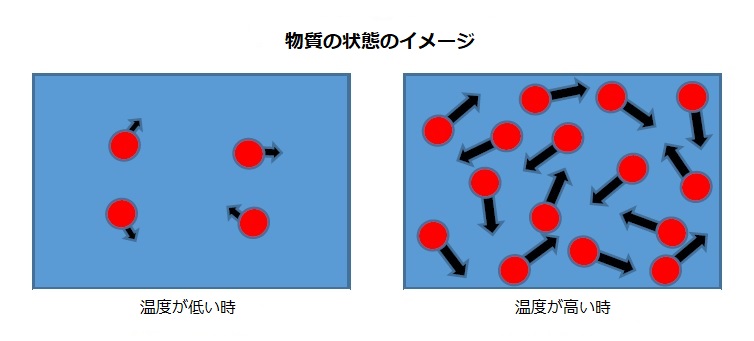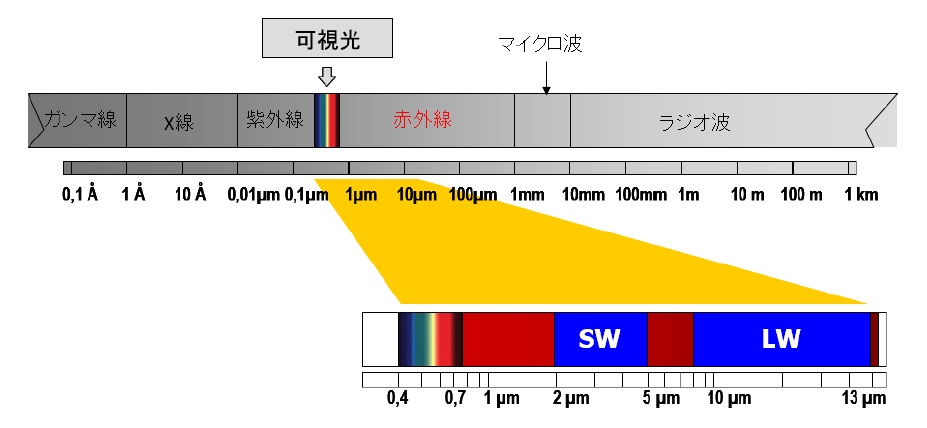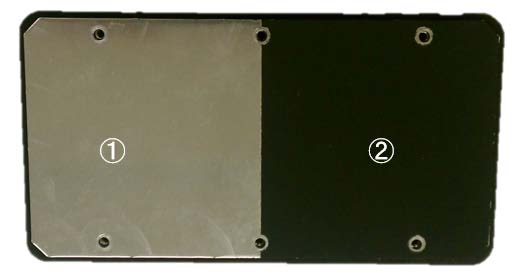Temperature indicates the speed of movement of the atoms and molecules configuration a substance, and also represents the ability to emit heat. Generally, unit temperature used is Celsius (°C), but when considering thermal energy, absolute temperature (K: Kelvin) is used. Absolute zero OK = -273.15°C (273.15K = 0°C), and unit of temperature δT = 1°C = 1K. All objects above absolute zero emit heat in the form of radiant energy. Temperature can be measured by measuring this radiant energy and converting it into temperature (Planck's law of thermal radiation).

This thermal radiation is electromagnetic waves (light), and since the temperature range that is usually measured is the range that mainly radiates infrared rays, it is called an infrared radiation thermometer.

radiation thermometer are broadly divided into spot measurement, line (one-dimensional scanning) measurement, and image (two-dimensional) measurement.
features of each radiation thermometer
- Spot radiation thermometer...Mainly used on production lines for measurements where temperature accuracy and repeatability are important
- Scanning radiation thermometer: Mainly used for measuring temperature patterns across the width of moving or rotation objects on production lines
- Thermography cameras: Various applications including facility diagnosis, building diagnosis, and research purposes
Benefits of Thermography Cameras
- Non-contact measurement possible from a distance
- Non-contact so no impact on the target object
- Real-time measurements possible using images
- It can handle temperatures from -20 to 2000°C (depending on the camera), and has high resolution and radius resolution
Weaknesses of thermography cameras
- It is not possible to measure the internal temperature because it measures the radiant energy from the surface of the object.
- Even though it is visible to the naked eye, it does not transmit infrared wavelengths, so it cannot be measured through glass or acrylic (though there are window materials that allow infrared light to pass through).
- The energy that enters the camera from the surface of the object being measured includes radiated, reflected, and transmitted energy, and not all objects can be measured accurately (emissivity issue).
Measurement precautions (emissivity)
Theoretically, the surface condition of a material that can be measured has emissivity of 1, but materials that are usually the subject of measurement are not 1 (0 < emissivity < 1). To perform accurate measurements with a thermograph, it is necessary to set emissivity etc. of the camera (emissivity can be set in the range of 0.01 to 1 (depending on the model)).
The energy incident on the camera from the surface of the object to be measured includes radiation, reflection, and transmission energy (Kirchhoff's law), and these are corrected along with emissivity to improve measurement accuracy. However, if the correction result exceeds the temperature range, no measurement result can be obtained.

Differences in emissivity

The surface is a simple heater (about 50℃) made of aluminum plate, and the right side is painted black.

On the right side, where emissivity is high, the temperature was measured accurately at 51.8°C.
The left side of the mirror only display 26.5℃, which is close to room temperature.
The effect of reflection (try focusing on a reflected object)

The camera itself is clearly visible = Ultra-low emissivity = difficult to correct
Here, emissivity is < 0.1, which means that the remaining 0.9 (90%) or more is measuring a reflected source, making the measurement meaningless. In general, it is recommended to measure emissivity of the target object > 0.7. Unoxidized metal surfaces tend to have low emissivity, while non-metallic surfaces tend to have high emissivity.


